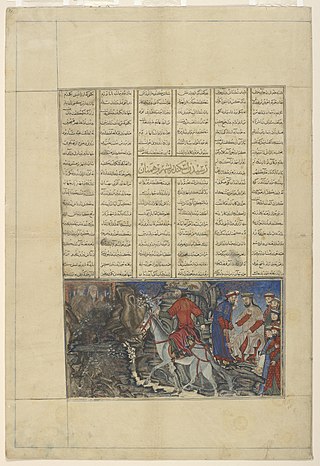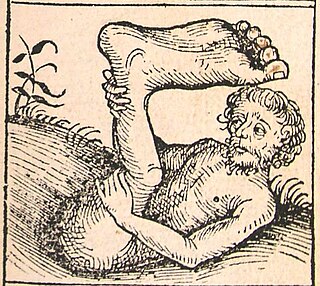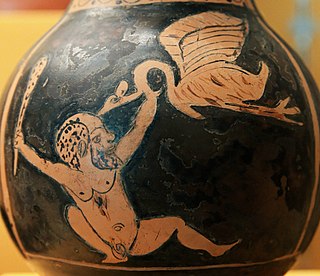Life
All that is known about Damis comes from Apollonius' biographer Philostratus who wrote his Life of Apollonius of Tyana between 217 and 238. Some scholars such as Charles Bigg believed that Damis never existed. [1] F.C. Conybeare, however, points out the extreme and unnecessary skepticism of this theory. [2]
E. Rabinovitch even advocates a high probability of the real existence of Damis' notebooks. [3] It is possible that Philostratus did use a biography of Apollonius by Damis, who was however, not trustworthy (that is, he was like the so-called aretalogi, sought to embellish the life of his master). [4]
According to Philostratus, Apollonius met Damis in a city which Philostratus calls "Old Ninos", which from its location cannot be Nineveh, but is in fact the "holy city" of Hierapolis Bambyce (Manbij) in Syria. [5] Damis admired Apollonius so much that he became his disciple, and kept a record of Apollonius' actions and sayings, the so-called Memoirs (or Diary) of Damis. These notes came into the possession of the empress Julia Domna, and it was she who commissioned Philostratus to write a biography of Apollonius, the extant Life of Apollonius of Tyana. That's what Philostratus asserts.

Apollonius of Tyana was a first-century Greek philosopher and religious leader from the town of Tyana, Cappadocia in Roman Anatolia, who spent his life travelling and teaching in the Middle East, North Africa and India. He is a central figure in Neopythagoreanism and was one of the most famous "miracle workers" of his day.

Daphne, a figure in Greek mythology, is a naiad, a variety of female nymph associated with fountains, wells, springs, streams, brooks and other bodies of freshwater.
Philostratus or Lucius Flavius Philostratus, called "the Athenian", was a Greek sophist of the Roman imperial period. His father was a minor sophist of the same name. He flourished during the reign of Septimius Severus (193–211) and died during that of Philip the Arab (244–249), probably in Tyre.
Empusa or Empousa is a shape-shifting female being in Greek mythology, said to possess a single leg of copper, commanded by Hecate, whose precise nature is obscure. In Late Antiquity, the empousae have been described as a category of phantoms or spectres, equated with the lamiai and mormolykeia, thought to seduce and feed on young men.

In Greek mythology, Geryon, also Geryone, son of Chrysaor and Callirrhoe, the grandson of Medusa and the nephew of Pegasus, was a fearsome giant who dwelt on the island Erytheia of the mythic Hesperides in the far west of the Mediterranean. A more literal-minded later generation of Greeks associated the region with Tartessos in southern Iberia. Geryon was often described as a monster with either three bodies and three heads, or three heads and one body, or three bodies and one head. He is commonly accepted as being mostly humanoid, with some distinguishing features and in mythology, famed for his cattle.
Mormo was a female spirit in Greek folklore, whose name was invoked by mothers and nurses to frighten children to keep them from misbehaving.

Gymnosophists is the name given by the Greeks to certain ancient Indian philosophers who pursued asceticism to the point of regarding food and clothing as detrimental to purity of thought. They were noted to have been vegetarian by several Greek authors. There were also gymnosophists in Upper Egypt who were called Ethiopian Gymnosophists by Apollonius of Tyana.

Lamia, in ancient Greek mythology, was a child-eating monster and, in later tradition, was regarded as a type of night-haunting spirit or "daimon".

The Epistle to Diognetus is an example of Christian apologetics, writings defending Christianity against the charges of its critics. The Greek writer and recipient are not otherwise known. Estimates of dating based on the language and other textual evidence have ranged from AD 130, to the general era of Melito of Sardis, Athenagoras of Athens, and Tatian.

In alchemy, an athanor is a furnace used to provide a uniform and constant heat for alchemical digestion. Etymologically, it descends from a number of Arabic texts of the period of the Caliphate which use the term "al-tannoor" in talismanic alchemy, meaning a bread-oven, from which the design portrayed evidently descends.
Titus Flavius T. f. T. n. Clemens was a Roman politician and cousin of the emperor Domitian, with whom he served as consul from January to April in AD 95. Shortly after leaving the consulship, Clemens was executed, allegedly for atheism, although the exact circumstances remain unclear. Over time, he came to be regarded as an early Christian martyr.

Frederick Cornwallis Conybeare, was a British orientalist, Fellow of University College, Oxford, and Professor of Theology at the University of Oxford.

Life of Apollonius of Tyana, also known by its Latin title Vita Apollonii, is a text in eight books written in Ancient Greece by Philostratus. It tells the story of Apollonius of Tyana, a Pythagorean philosopher and teacher.

Monopods were mythological dwarf-like creatures with a single, large foot extending from a leg centred in the middle of their bodies. The names monopod and skiapod (σκιάποδες) are both Greek, respectively meaning "one-foot" and "shadow-foot".

The Pygmies were a tribe of diminutive humans in Greek mythology.

Magic in the Greco-Roman world – that is, ancient Greece, ancient Rome, and the other cultures with which they interacted, especially ancient Egypt – comprises supernatural practices undertaken by individuals, often privately, that were not under the oversight of official priesthoods attached to the various state, community, and household cults and temples as a matter of public religion. Private magic was practiced throughout Greek and Roman cultures as well as among Jews and early Christians of the Roman Empire. Primary sources for the study of Greco-Roman magic include the Greek Magical Papyri, curse tablets, amulets, and literary texts such as Ovid's Fasti and Pliny the Elder's Natural History.
Euphrates was a Stoic philosopher, who lived c. 35–118 AD.
Sossianus Hierocles was a late Roman aristocrat and office-holder. He served as a praeses in Syria under Diocletian at some time in the 290s. He was then made vicarius of some district, perhaps Oriens until 303, when he was transferred to Bithynia. It is for his anti-Christian activities in Bithynia that he is principally remembered. He was, in the words of the Cambridge Ancient History, "one of the most zealous of persecutors". While in Bithynia, Hierocles authored Lover of Truth, a critique of Christianity. Lover of Truth is noted as the first instance of the trope, popular in later pagan polemic, of comparing the pagan holy man Apollonius of Tyana to Jesus Christ.

The Euphrates Tunnel was a legendary tunnel purportedly built under the river Euphrates to connect the two halves of the city of Babylon in Mesopotamia.
Asbamaeus was an epithet of the Greek god Zeus, in his persona as the protector of the sanctity of oaths.












